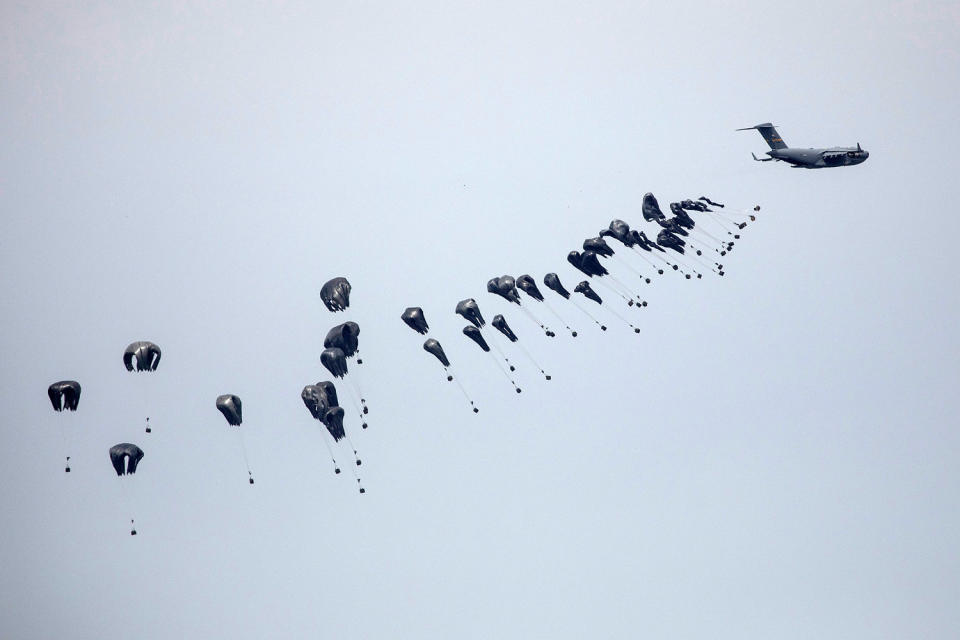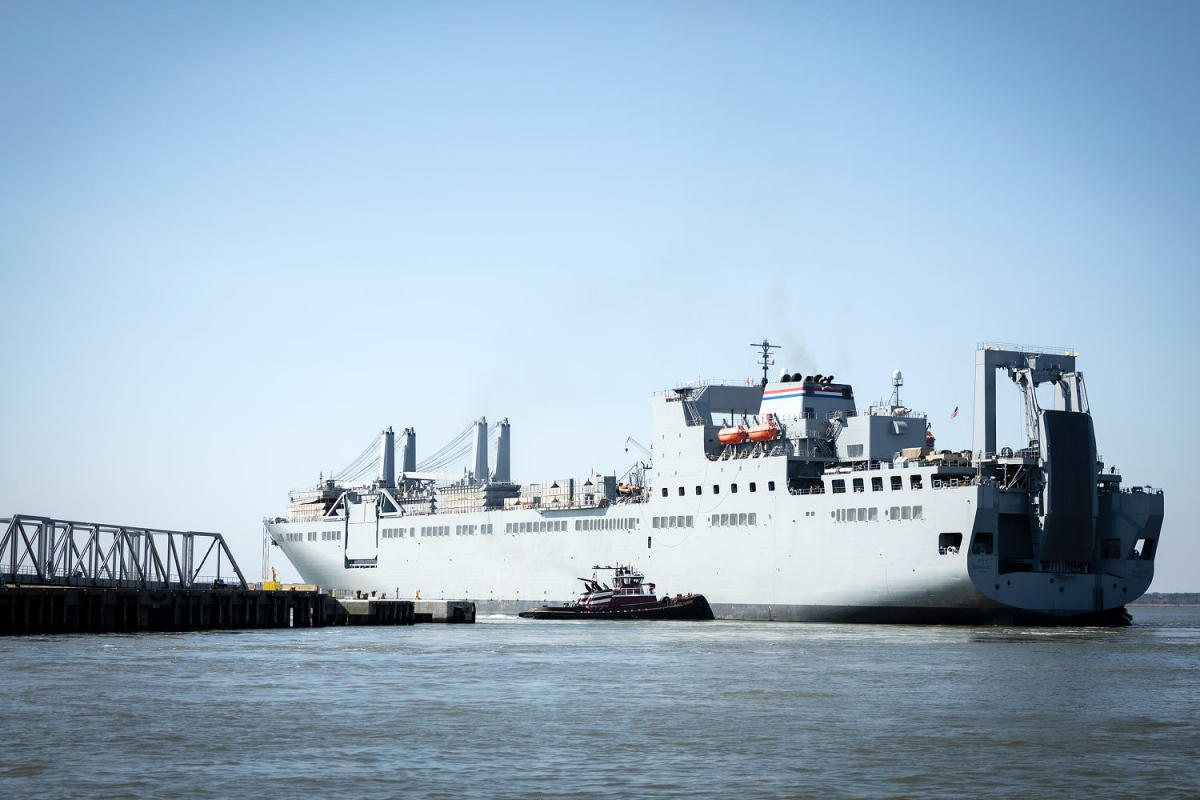The concerns are the latest wrinkle in the White House push to get aid to the enclave’s hungry population via a floating dock. U.S. military officials have told NBC News that the first time they heard that the idea for a dock had been greenlit was the day President Joe Biden announced it at the State of the Union address on March 7. When Biden announced it, the Pentagon still did not have an approved plan for how to carry it out, including how to do it safely.
The first ships carrying components of the dock system left for the Mediterranean six days later.
The military intends to build the dock several miles offshore, where civilian ships will offload aid supplies. Then the aid would be loaded into trucks that would drive onto U.S. Army boats and be ferried to a separate temporary pier fixed to the shore.
But since the administration does not want any U.S. boots on the ground, someone else has to get the aid to the sites where it is distributed to Gaza’s residents. One option under consideration, the officials say, is to have drivers and guards from other nations, or private security guards, move the trucks from the pier onto land to distribute the aid, and then drive the empty trucks back to the pier. It has not yet been determined whether the drivers and their security should be Israelis or Palestinians or another nationality.
Once the empty trucks have been returned to the temporary pier, they would be handed back to the Americans, who would then take them out to the floating offshore dock to refill them with aid and start the process again.
The proposal would shield U.S. personnel from the risk of coming under attack inside Gaza, or of firing on any perceived threat. But the handoff plan presents a different risk, according to the officials, because the aid trucks will be driven and guarded on their round trips in Gaza by people who are not U.S. service members. “Someone could tuck a bomb on a truck with a timer or remote detonator and cause a catastrophe,” said a U.S. military official.
Another option under consideration is to drive the trucks a short distance ashore and unload them within a security perimeter, likely provided by the Israel Defense Forces, officials said. But that would take more time, resources and coordination, and result in Palestinians waiting longer for critical aid.
At a White House briefing this week, national security adviser Jake Sullivan said that the IDF will protect the deliveries once the dock system is in place. “It will be IDF assets who actually secure it so that there are no U.S. boots on the ground in Gaza,” he said.
But U.S. military officials say they are still working through all the plans, including who will secure and search the trucks once they’re on Gazan soil and who will drive them to and from the aid distribution points.
A spokesperson for the White House National Security Council declined to comment.

Diplomatic officials have argued that the fastest way to get aid to those in need is to drive the trucks directly to a distribution point. But that would require screening the trucks multiple times after aid delivery before allowing them back on the temporary pier. The IDF could do an initial screening on the beach and then the U.S. military could use portable vehicle screening devices to check the trucks at a distance for explosives or dangers before they are driven onto the pier.
One U.S. military official equated the process to screening trucks entering a U.S. military base in a war zone. While the portable devices give the U.S. some remote screening capabilities, the official acknowledged that they have to get the trucks onto the pier and up close for the most thorough screening.
One military official said U.S. personnel headed to the waters off Gaza are aware of the dangers: “These troops believe in the mission to save lives and they know they incur risk in doing so.”
This article was originally published on NBCNews.com
